Comprehensive Guide to Growing Marijuana: Tips, Guides, and Kits
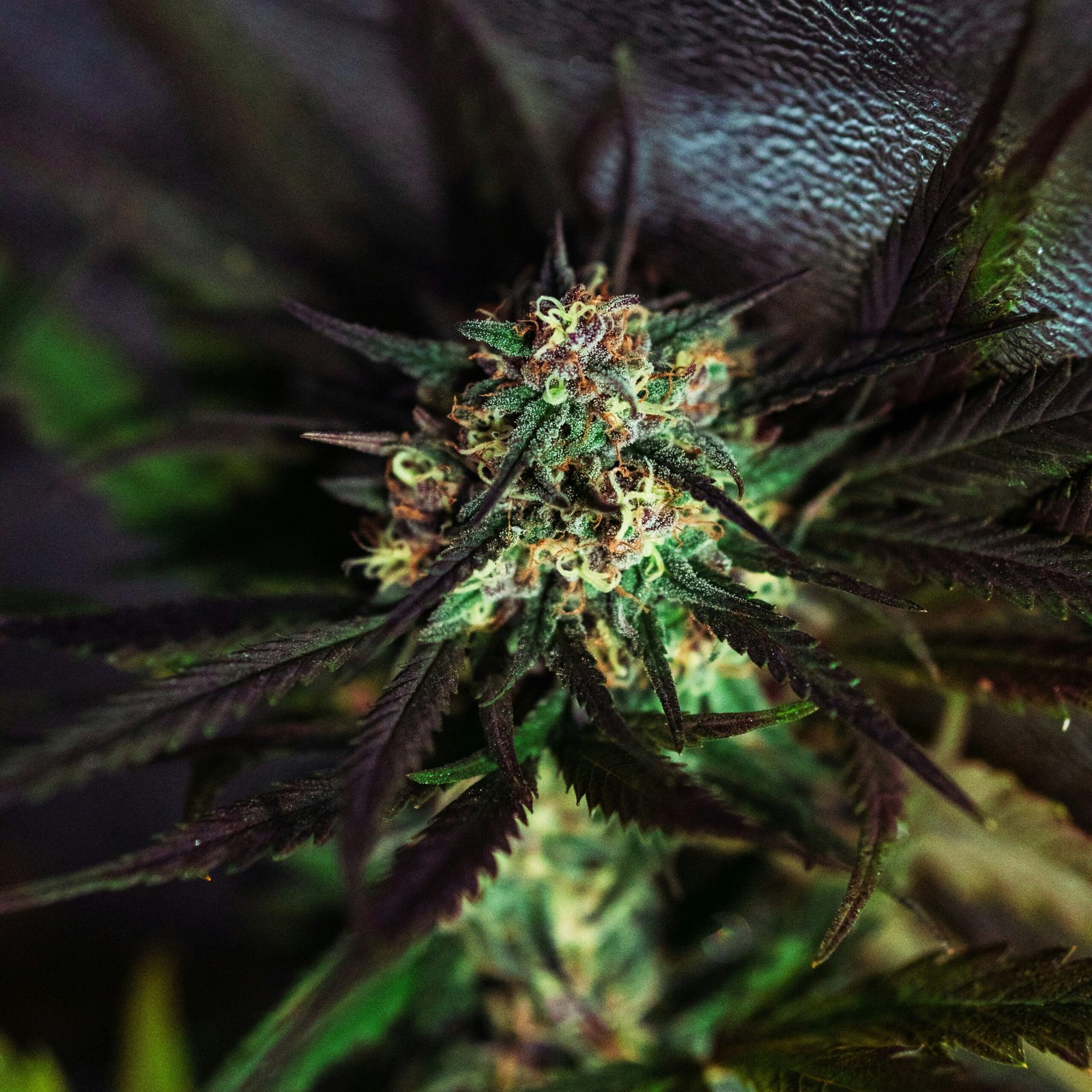
understanding marijuana growing, to understanding regulatory considerations Outdoor Marijuana Growing, indoor Marijuana Growing
Introduction to Growing Marijuana
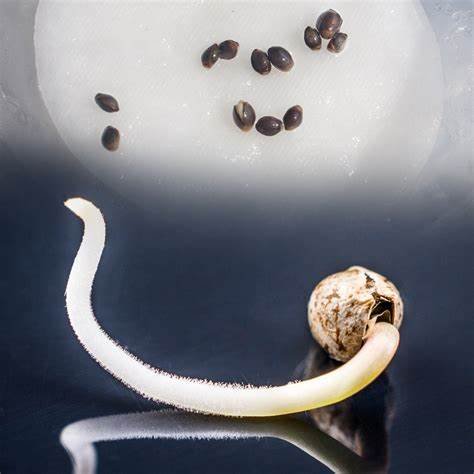
In recent years, there has been a marked increase in the number of individuals interested in growing marijuana, a trend driven by both recreational and medicinal purposes. This burgeoning interest can be attributed to changing legislation, a growing body of research supporting the medicinal benefits of cannabis, and the rising demand for high-quality, homegrown marijuana. Whether you’re a novice or someone with a green thumb, understanding the intricacies of cannabis cultivation can be incredibly rewarding.
The fundamentals of growing marijuana begin with a basic understanding of plant biology. Cannabis is a complex plant with diverse strains, each requiring specific conditions for optimal growth. Knowing the life cycle of the plant—from germination to flowering and harvest—is essential for any cultivator. Each stage of growth requires particular care, nutrients, and environment controls to ensure healthy development and to maximize yield.
Regulatory considerations are a critical aspect of growing marijuana. Marijuana cultivation is heavily regulated and varies significantly by region. Prospective growers must familiarize themselves with local laws and regulations to remain compliant. This includes understanding possession limits, licensure requirements, and zoning laws that might affect where and how marijuana plants can be grown.
One of the most significant benefits of growing your own marijuana is the ability to control the entire cultivation process, ensuring that you consume a product free from pesticides and other harmful chemicals. Home growing allows enthusiasts to explore different strains, experiment with growing techniques, and achieve a level of self-sufficiency. Additionally, cultivating your own marijuana can be a cost-effective alternative to purchasing from dispensaries, often resulting in considerable savings.
Overall, the journey of growing marijuana is both a science and an art. It requires a blend of knowledge, patience, and passion. As we delve deeper into this guide, we will provide you with tips, step-by-step guides, and recommendations for the best growing kits to help you on your marijuana cultivation journey.
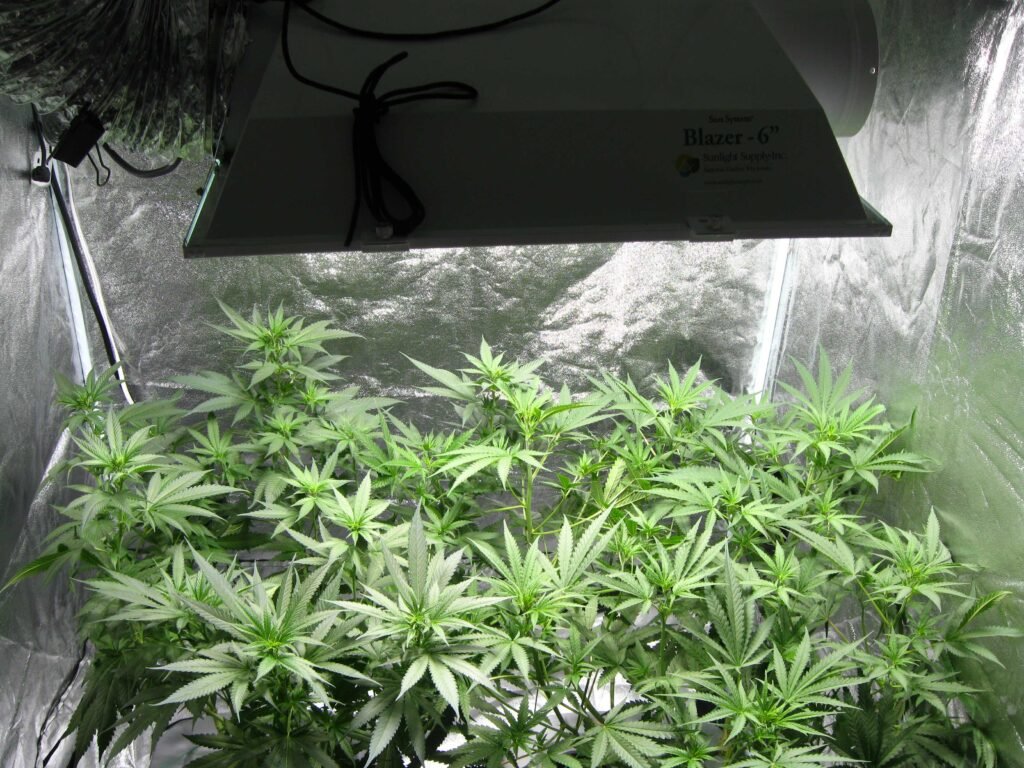
Essential Marijuana Growing Tips
Venturing into marijuana cultivation requires careful attention to various factors to ensure healthy growth and bountiful harvests. One of the first steps involves selecting the right strain. Whether you aim for medicinal or recreational use, it is crucial to choose strains that match your needs and local growing conditions. Indica strains often suit beginners due to their robustness and shorter flowering periods, while Sativa strains may necessitate more experience and specific environments.
Optimizing the growing conditions is another significant aspect of successful marijuana cultivation. Light plays a pivotal role in the plant’s life cycle; therefore, ensure a balanced light spectrum. During the vegetative phase, 18 hours of light and 6 hours of darkness can foster robust growth, while the flowering phase typically benefits from a 12-hour light and 12-hour dark schedule. Additionally, maintaining an optimal temperature range—usually between 70-85°F during the day and slightly cooler at night—is crucial for plant health.
Humidity needs vary with each growth stage of marijuana plants. During the early vegetative stage, higher humidity levels around 60-70% are beneficial, gradually decreasing to about 40-50% during the flowering stage to prevent mold and mildew. Employing a hygrometer can help continuously monitor and adjust humidity levels as necessary.
Choosing the appropriate soil and nutrients significantly impacts the growth and yield of marijuana plants. Well-aerated, nutrient-rich soil with good drainage is ideal. Many growers prefer organic soil fortified with compost, worm castings, and other natural amendments. Regular feeding with balanced nutrients—especially nitrogen during the vegetative stage and increased phosphorus during the flowering stage—promotes healthy development and enhances bud production.
Troubleshooting common growing problems is essential for maintaining plant health. Issues such as nutrient deficiencies, pests, and diseases can obstruct growth if left untreated. Regularly inspecting plants for yellowing leaves, spots, or other signs of distress can help you quickly address and rectify problems, ensuring sustained growth. Adopting these fundamental tips will help you embark on a successful marijuana growing journey.
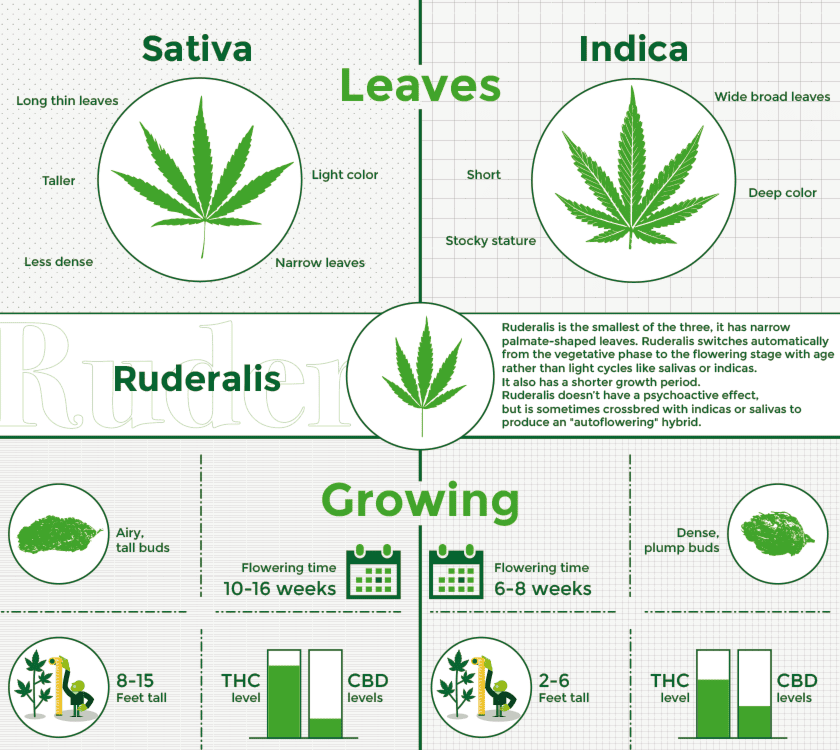
Comprehensive Marijuana Growing Guides
Growing marijuana successfully requires a structured approach, starting from seed germination and extending through to the harvest. Seed germination is the initial, and one of the most critical stages of the marijuana growing process. Various techniques, such as the paper towel method or directly planting seeds in soil, can be employed to sprout seeds. The choice of method can impact the germination success rate, with the paper towel method being widely preferred for its simplicity and effectiveness.
Once seeds have germinated, the vegetative phase begins. This stage involves encouraging robust plant growth through adequate light exposure, typically 18 hours a day, and providing proper nutrients. During the vegetative phase, cannabis plants develop a strong root system and healthy foliage, essential for supporting the flowering phase. Ensuring the plants receive the right balance of nitrogen will significantly aid in their development during this period.
The flowering phase is the subsequent stage, marked by a change in the light cycle to about 12 hours of light and 12 hours of darkness daily. This phase prompts cannabis plants to begin producing buds. During flowering, it is critical to maintain optimal environmental conditions, such as temperature and humidity levels, to prevent mold and pest infestations. Nutrient adjustments are also necessary, shifting from nitrogen-rich feed to phosphorus and potassium-heavy nutrients to support bud production.
Throughout these phases, implementing pruning and training methods can enhance plant health and yield. Techniques such as topping, fimming, and low-stress training (LST) help in creating an even canopy and allowing light to penetrate more effectively, promoting the growth of bud sites. Pruning away unnecessary foliage and lower branches can further concentrate plant energy on bud development.
Finally, understanding the right time to harvest is essential. Close observation of the trichomes, the resinous glands on the buds, provide a clear indicator of readiness. Milky white trichomes suggest peak potency, while amber-hued trichomes signal a more sedative effect. Carefully timed harvesting, followed by proper drying and curing, ensures the final product is of the highest quality.
Choosing the Best Marijuana Growing Kits
Whether you are a novice cultivator starting with a small personal setup or an experienced grower managing a larger operation, selecting the right marijuana growing kit is crucial to your success. The market offers a wide range of kits tailored to varying needs and skill levels, allowing you to find one that fits your specific requirements.
For indoor growing, many kits come equipped with grow lights, ventilation systems, and reflective materials to ensure optimal plant growth. Among the popular choices are complete tent kits and hydroponic systems. Tent kits often include LED or HID lights, fans, carbon filters, and sometimes even watering systems, making them ideal for beginners and intermediate growers. These kits provide a controlled environment that minimizes external variables, leading to consistent results.
On the other hand, hydroponic systems are suitable for those looking for a more advanced method. These kits rely on water-based nutrient solutions rather than soil, often resulting in faster growth and higher yields. However, they require a better understanding of plant nutrition and hydroponic techniques, making them more suitable for intermediate to advanced growers.
For outdoor cultivation, greenhouse kits and open-field setups are commonly available. Greenhouse kits offer the advantage of protecting your plants from pests and harsh weather conditions while allowing for natural sunlight. These kits might include polycarbonate panels, ventilation systems, and even irrigation setups. They are excellent for those who want to scale up their operations while maintaining some level of environmental control.
Finally, consider the size of your operation when choosing a marijuana growing kit. Small-scale kits are perfect for personal use, providing everything needed for a few plants. These kits are compact, easy to manage, and often come with detailed instructions. For commercial growers aiming for large-scale production, more sophisticated setups are available. These larger kits typically feature advanced hydroponic systems, climate control units, and automation tools to simplify labor-intensive tasks.
Each type of marijuana growing kit has its own set of benefits and drawbacks, dependent on factors like scale, growing environment, and experience level. By carefully evaluating your specific needs, you can select the kit best suited to maximize your yield and ensure a successful growing experience.
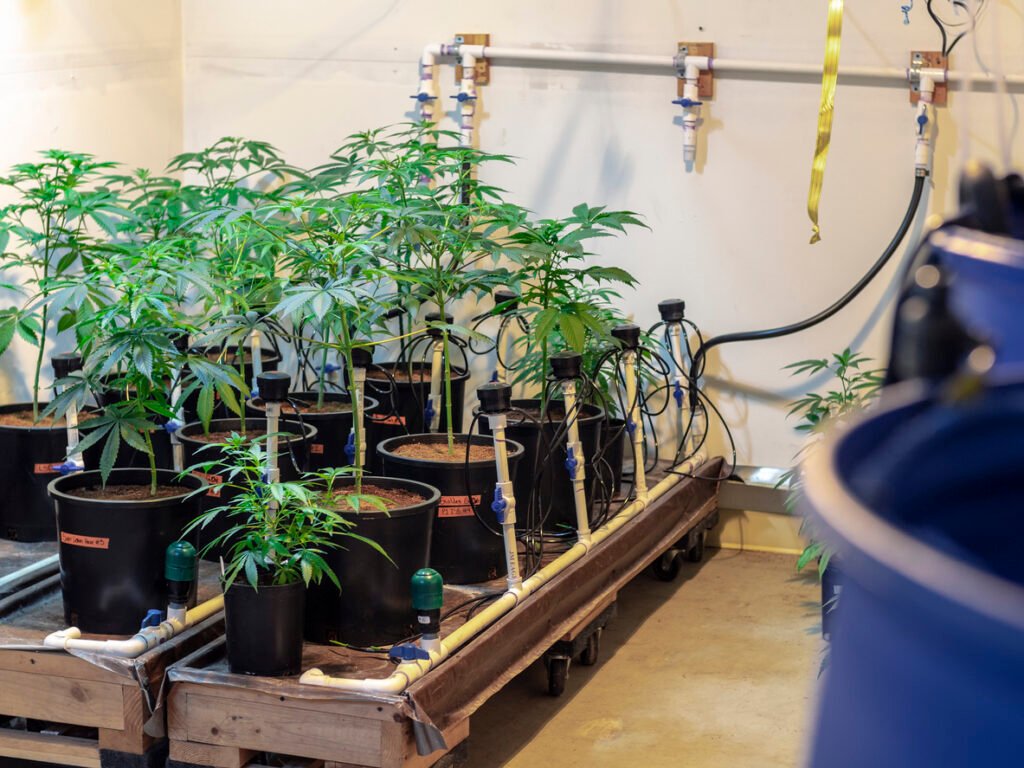
Indoor Marijuana Growing
Growing marijuana indoors presents a unique set of challenges and opportunities. One of the first steps in setting up your indoor grow operation is selecting and preparing an appropriate grow space. This space can range from a small closet to an entire room, but it must be clean, secure, and capable of supporting the necessary equipment. Investing in a grow tent may be beneficial as it provides a controlled environment and helps contain the setup efficiently.
Choosing the right indoor lighting system is critical for the success of your marijuana plants. The most popular options include LED and High-Pressure Sodium (HPS) lights. LED lights are energy-efficient, produce less heat, and can be tailored to emit specific light spectrums, making them ideal for various growth stages. HPS lights are known for their intense, bright light and are often used during the flowering phase to promote robust bud development. Properly managing light cycles is essential, with most growers opting for an 18-hour light and 6-hour dark routine during the vegetative stage and a 12-hour light and 12-hour dark cycle during the flowering stage.
Controlling the indoor climate is another pivotal factor in successful marijuana cultivation. Maintaining optimal temperature and humidity levels allows for healthy plant growth. Ideal temperatures typically range between 70-85°F during the day and slightly cooler at night. Humidity levels should be kept around 40-60% during the vegetative stage and reduced to 40-50% during the flowering stage to prevent mold and mildew.
Effective odor control and air circulation are crucial. The strong, distinctive smell of marijuana can be managed using carbon filters, which neutralize odors as they pass through. Additionally, continuous air circulation helps regulate temperature and humidity while supplying the plants with fresh CO2. Use oscillating fans to enhance airflow and prevent hotspots, which can lead to mold or pest issues.
Mastering indoor marijuana growing requires attention to detail and a commitment to creating an optimal environment. By carefully selecting and setting up your grow space, managing your lighting systems, controlling the indoor climate, and maintaining proper odor control and air circulation, you can cultivate a successful and bountiful indoor marijuana garden.
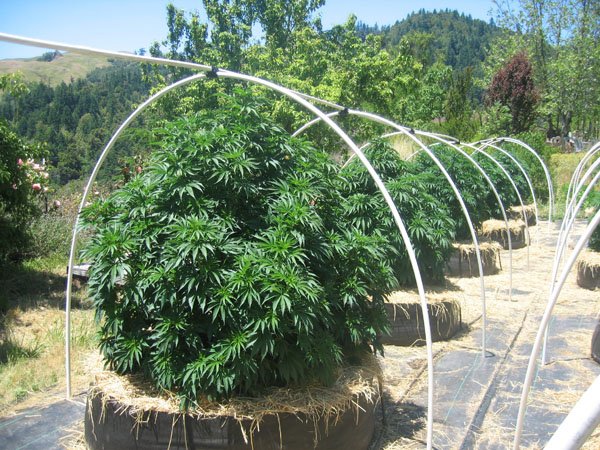
Outdoor Marijuana Growing: Step-by-Step
Growing marijuana outdoors offers several advantages, including natural sunlight, fresh air, and the potential for larger yields. However, outdoor cultivation also requires careful planning and management. This detailed guide will outline the critical steps for a successful outdoor marijuana grow, from site selection to pest control, ensuring a productive cultivation cycle.
Site Selection
The success of an outdoor marijuana grow begins with selecting an optimal site. Choose a location that receives at least six hours of direct sunlight per day. The selected area should have good air circulation and be secluded to protect your plants from prying eyes and potential theft. Ensure there’s access to water, as marijuana plants require consistent moisture especially during dry periods.
Soil Preparation
Healthy soil is the foundation of any thriving garden. Opt for well-draining soil rich in organic matter. If the native soil is poor, consider amending it with compost, peat moss, and perlite to improve its texture and nutrient content. Testing the pH level of your soil is also critical; marijuana thrives best in slightly acidic to neutral soil, with a pH range of 6.0 to 7.0.
Planting Schedules
Timing is crucial in outdoor marijuana growing. It’s best to start seeds indoors in early spring and transplant seedlings outdoors once the danger of frost has passed. In most regions, this is typically from mid-May to early June. Flowering generally begins when the days shorten in late summer, leading to a harvest in early to mid-fall. To optimize yields, understanding your local climate and growing season is essential.
Pest and Disease Management
Outdoor plants are susceptible to pests and diseases. Regularly inspect your plants for common pests such as aphids, spider mites, and caterpillars. Beneficial insects like ladybugs can help control pest populations naturally. Additionally, mold and mildew can be problematic in humid conditions. Ensuring proper spacing and air circulation can minimize these risks.
Natural Growing Techniques
Embracing natural growing techniques can bolster plant health and boost yields. Companion planting with herbs like basil and garlic can deter pests while enhancing the soil. Utilizing mulch can conserve soil moisture and suppress weed growth. Adopting organic fertilizers and amendments further promotes sustainable cultivation practices.
While growing marijuana outdoors can be more cost-effective and environmentally friendly than indoor cultivation, it does present unique challenges. The natural elements are less controllable than in a regulated indoor environment, requiring a bit more vigilance and planning. Yet, with thoughtful preparation and attentive care, outdoor growing can yield high-quality, abundant harvests.
Marijuana: Classes of Drugs and Legal Considerations
Understanding the classification of marijuana within the context of controlled substances requires a basic knowledge of drug scheduling systems used by legal and governmental authorities. The classification helps delineate substances based on their accepted medical use and potential for abuse. In the United States, for instance, the Controlled Substances Act (CSA) categorizes drugs into five schedules. Marijuana is currently listed as a Schedule I drug under the CSA, indicating it has a high potential for abuse and no accepted medical use according to federal guidelines. This classification places marijuana in the same category as drugs like heroin and LSD.
However, the classification of marijuana is more complex on a global scale. Various countries and regions have adopted different approaches to marijuana classification and regulation. For instance, several countries in Europe, such as the Netherlands and Portugal, have decriminalized the possession of small amounts of marijuana. In contrast, numerous countries in Asia maintain stringent laws against marijuana use and possession, reflecting disparities in global drug policies.
Legal considerations surrounding marijuana are rapidly evolving, with significant changes occurring in both medical and recreational contexts. In the United States, individual states have been key players in altering the legal landscape. Many states have enacted legislation to legalize marijuana for medical purposes, recognizing its potential benefits in treating conditions such as chronic pain, epilepsy, and multiple sclerosis. Furthermore, a growing number of states have legalized recreational marijuana use, allowing adults to purchase and consume marijuana similarly to alcohol.
The trend toward legalization is not confined to the United States. Canada, Uruguay, and Mexico are among the countries that have fully legalized marijuana, setting regulatory frameworks for its cultivation, distribution, and use. These countries serve as examples of how comprehensive policy and regulation can be implemented to address issues related to health, safety, and legal compliance.
Despite these advancements, it is important to recognize that marijuana remains a controlled substance in many parts of the world. Legal considerations for growing, possessing, and distributing marijuana can vary widely, necessitating thorough research and compliance with local laws and regulations.
Resources and Further Learning
For those who aspire to delve deeper into marijuana cultivation, a wealth of resources is available to support ongoing education and community engagement. Engaging with these materials will enrich your understanding and expertise in growing marijuana, while also connecting you with fellow enthusiasts and experts in the field.
One highly recommended starting point is the selection of quality literature on the subject. “The Cannabis Grow Bible” by Greg Green and “Marijuana Horticulture: The Indoor/Outdoor Medical Grower’s Bible” by Jorge Cervantes are foundational texts, offering comprehensive guidance from seed to harvest. These books cover a wide spectrum of topics, from basic plant biology to advanced cultivation techniques.
Online courses also offer structured learning pathways for growers at all levels. Platforms like Udemy and Coursera host courses such as “Growing Cannabis 101” and “Advanced Cannabis Cultivation,” which include video tutorials, interactive quizzes, and certificates of completion. These courses provide a flexible learning schedule, allowing you to study at your own pace and apply what you learn directly to your grow operations.
For real-time advice and peer support, forums like Grasscity and Rollitup are invaluable. These communities foster an environment where growers can share experiences, troubleshoot issues, and discuss the latest in cultivation technology and methods. Topics range from nutrient mix tips to lighting solutions, making it a treasure trove of practical knowledge.
Lastly, subscribing to expert blogs and newsletters can keep you updated with the latest industry news, breakthroughs in cultivation methods, and product reviews. Notable mentions include websites like Leafly and High Times, which regularly publish in-depth articles and opinion pieces by seasoned growers and industry professionals.
By leveraging these resources, you can continually expand your skills and stay informed about advancements in marijuana cultivation. This commitment to learning will not only enhance your yields and plant quality but also enrich your experience as part of a dynamic and passionate community.


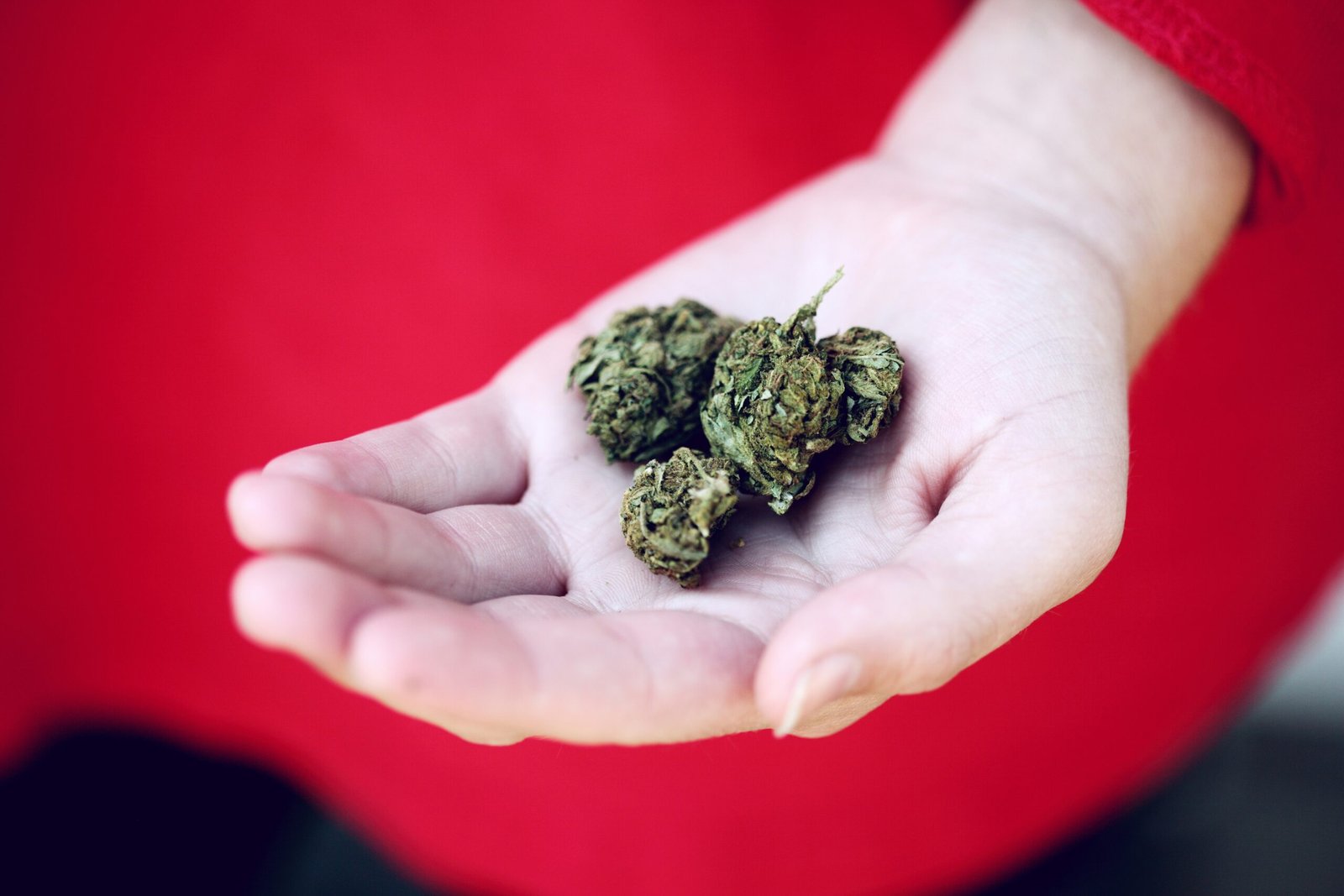
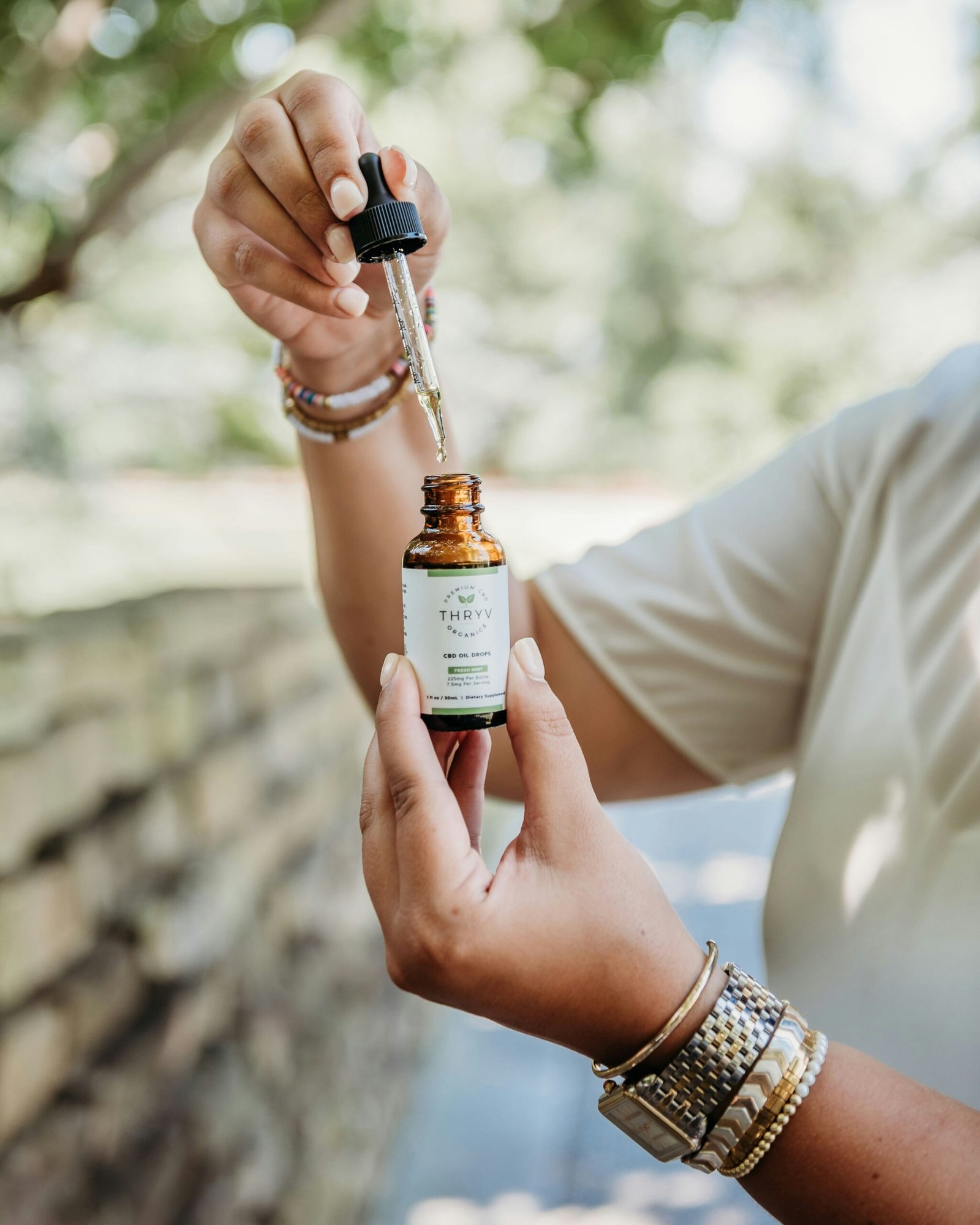


Caluanie Muelear Oxidize
Bretazenil
Bromonordiazepam
PHTINACA
Etomidate
Fluorodeschloroketamine
Ephedrine sulphate injection
Gamma-Hydroxybutyric Acid (GHB)
2C-D compound
4-AcO-MALT
AD-18
Ketamine Hydrochloride
MDA-19
Methylone
Platinum Powder
Protonitazepyne
Red Mercury liquid
Sodium Cyanide
Thiopropamine
Ethylpentedrone
Metonitazepyne
MMB-FUBINACA
igetcarts
blueberry cupcake strain
cap junky strain
cadillac rainbow strain
soap strain
chimera strain
super boot strain
Tropical burst strain
Blue lobster strain
iget bar plus
gunnpod strawberry kiwi
gunnpod classic tobacco
banana pomergrante cherry ice
blackberry raspberry ice
blackberry raspberry lemon
lackberry raspberry orange
nova og
northern lights
master kush
Grape Ape
Hindi kush
death star
bubba kush
abusive og
mazar i sharif hash
bananimal strain
cookies and cream weed strain
bacio gelato
T1 flower
raw kief
cherry wine
super lemon haze
elektra strain
white rhino
kurupt moonrocks
zodiaks moonrocks
alaskan thunder fuck
durban poison
ghost train haze
green crack
jack herer
king tut strain
willie nelson strain
mazatapec mushroom
golden teacher mushroom
mushroom peanut butter cookie
milk chocolate orange square
mexican cubensis mushrooms
malabar mushrooms
green apple mushroom
dark chocolate mint square
cherry mushroom jelly
brazilian cubensis
blue meanies mushrooms
arenal volcano mushrooms
amazonian cubensis
albino penis envy mushrooms
albino cubensis capsules
alacabenzi cubensis